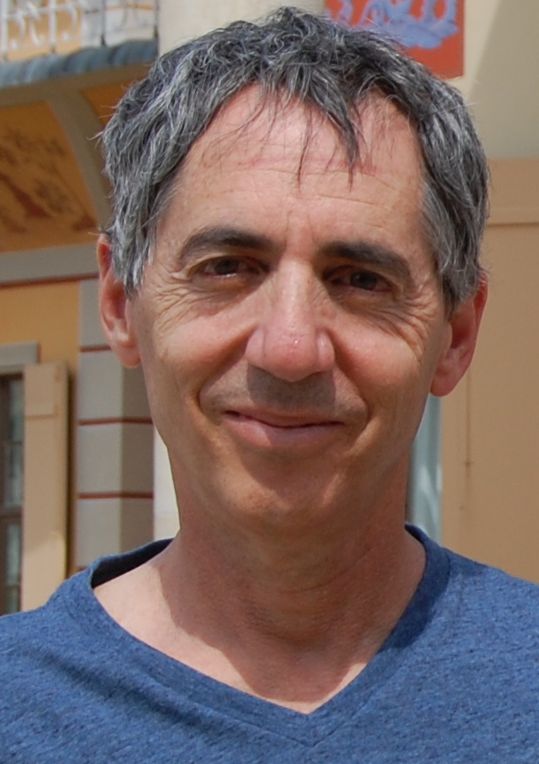


The American problem composer Joseph Ney Babson (1852-1929) is still well-know because in 1884 he proposed a task which became later known as the Babson task. The goal was a chess problem in which Black (after White’s key move) has among others, four different defences in which Black promotes a pawn to four different pieces (Q, R, B, S). Then the only way for White to checkmate in the stipulated number of moves is to promote his own pawn to the same piece to which Black promoted.
The task proved to be exceedingly difficult to accomplish in an orthodox problem (in other genres the task was done earlier). The French problem composer Pierre Drumare spent 22 years of his life unsuccessfully attempting to compose one. Then, in March 1983, a problem appeared, as number 23 in the "Originals" section of the magazine Shakhmaty v SSSR. It was by a 26-year-old soccer and chess trainer from Kazan named Leonid Vladimirovich Yarosh, who had previously published only three problems in Shakhmaty v SSSR and in Thèmes-64.
The Cyrillic caption to this problem said: "!!!Estj task Babsona?" and the editor asked the readers to decide whether "everything in this extraordinarily difficult construction is really correct." It is, as we were able to confirm, in 2018, with a problem solving program:

The computer shows us: if Black defends by capturing on b1 and promoting to a queen, White must capture on b8 and also promote to a queen in order to mate in four. If Black promotes to a rook White must counter-promote to a rook, if Black takes a bishop White must do likewise, and if Black promotes to a knight White must take a knight too. The full solution goes as follows:
1.Rxh4 and now:
1...cxb1Q 2.axb8Q Qxb2 3.Qb3 Qc3 4.Qxc3# (or 2...Qe4 3.Qxf4 Qxf4 4.Rxf4#)
1...cxb1R 2.axb8R Rxb2 3.Rb3 Kxc4 4.Rxf4#
1...cxb1B 2.axb8B Be4 3.Bxf4 Bxh1 4.Be3#
1...cxb1N 2.axb8N Nxd2 3.Nc6+ Kc3 4.Rc1#
The amazing Yarosh did not leave it at that. The ugly capture key had preyed on his mind and a few months later he presented another perfect Babson, again in the form of a light, elegant position with a perfect key move. He received a first prize for this. And then the amazing Yarosh produced a third, completely different version, the most perfect yet.
The publication of Yarosh problem inspired other composers to compose Babson task problems. Be sure to read the full story here:
Was this task already difficult in a chess problem, many considered it to be impossible to compose a sound Babson task endgame study.
In EG no. 57 (July 1979) the provisional award of the Roycroft-50 jubilee tourney was published. It was one of the largest endgame study tourneys ever, with no less than 274 entries (a tourney is already considered very large when more than 100 original studies are entered).
 Jan Rusinek initially won first prize with his study featuring a 75% Babson in a study. The short comment was “economical super-task.” Unfortunately, the study proved to be unsound within the confirmation time of the tourney and was eliminated from the award (final award EG no. 50 January 1980).
Jan Rusinek initially won first prize with his study featuring a 75% Babson in a study. The short comment was “economical super-task.” Unfortunately, the study proved to be unsound within the confirmation time of the tourney and was eliminated from the award (final award EG no. 50 January 1980).
Jan Rusinek (born 2nd December 1950) is the most prominent Polish endgame study composer of the last decades. He was a mathematician by profession. Rusinek was endgame study editor of the composition magazine Szachy from 1971 to 1990. He holds the title of Internation Judge for Chess Composition (endgame studies) since 1983, and more important, obtained the GM title in chess composition in 1992.
Jan managed to correct the study in 1980. But also that version was unsound (2001). Very recently, he managed a sound version (which he published on his website):
1.Ra1+ e1Q 2.Rxe1+ and now:
A) 2...g1Q 3.fxg8Q! Qxe1 4.Qa8+ Kg1 5.Bd4+ Kf1 6.Qf3+ and mate, or:
B) 2...g1B 3.fxg8B! (3.fxg8Q/R? stalemate, and after 3.fxg8S? Kg2 White cannot win, e.g. 4...h1Q 5.Sf5 h2 6.e7 Kh3 7.e8Q Qd5 with perpetual check) 3...Kg2 4.Bd4! Bxd4 (4...h1Q 5.Bh7) 5.Bh7 h1Q 6.Be4+ Kf2 7.Rxh1 wins.
C) 2..h1N 3.fxg8N! (3.fxg8Q/R? stalemate, and White cannot win, e.g. 4.Bh7 Kf2, or 4.Bf6 Nf3 5.Re2+ Kg3 6.Rxh2 Kxh2 7.Bxe7 b2 8.Bh7 Kg2 9.Bc5 h2) 3...Kg2 4.Nxe7 h1Q 5.Nf5! (this now wins) 5...Kf2 (5...Qh2 6.Be5) 6.Rf1+! Kxf1 7.Ng3+ Kg2 8.Nxh1 Kxh1 9.e7 wins.
 Enter Gady Costeff. Born in Beer Sheva, Israel 1961, moved to the US where he lives since. He received a BSc in Computer Science in San Francisco and an MBA in Berkely. He is a corporate consultant on doing business on the internet. In chess, Costeff obtained the title of IM for chess composition (2008). He has published a relatively small number (around 100) of endgame compositions, but those are of very high level. For instance, already at an early age, he got 2nd place in the second edition (1980-1981) of the World Chess Composition Tourney.
Enter Gady Costeff. Born in Beer Sheva, Israel 1961, moved to the US where he lives since. He received a BSc in Computer Science in San Francisco and an MBA in Berkely. He is a corporate consultant on doing business on the internet. In chess, Costeff obtained the title of IM for chess composition (2008). He has published a relatively small number (around 100) of endgame compositions, but those are of very high level. For instance, already at an early age, he got 2nd place in the second edition (1980-1981) of the World Chess Composition Tourney.
Another big contribution to chess composition is that together with Lewis Stiller he developed the freely available script language Chess Query Language (CQL). That is a very powerful tool to query the endgame study database of Harold van der Heijden (www.hhdbvi.nl) for anticipations. Be sure to have a look at http://gadycosteff.com/cql/
Probably became inspired by Rusinek’s 75% Babson as he wrote me that he has worked for 45 years on the Babson task. Soon, he also managed a 75% Babson:
1.d7! Rxe8 2.Rxb1+ and now:
A) 2...e1Q 3.dxe8Q! (3.dxe8R? Qxb1 and Black win) 3...Qxb1 4.Bd7 Qxd3 5.Bb5 wins.
B) 2...e1B 3.dxe8B! (3.dxe8Q/R? stalemate, 3.dxe8S? Ke2 4.Rb2+ Bd2 draws) wins, e.g. Ke2 4.Bh5+ Ke3 5.Kg2.
C) 2...e1S 3.dxe8S! (3.dxe8Q/R? stalemate, 3.dxe8B? Ke2 and 4.Bh5+ Ke3 and 5.Rb2+ Ke3 draws (the bS will sacrifice itself for the wPd3, or 5.Bh5+ Ke3 and now White only has 6.Be2 Kxe2 7.Rb2+ Ke3 8.Rxf2 Kxf2 again a draw) 3...Ke2 4.Rb2+ Ke3 5.Rxf2 Kxf2 6.Sf6 (or 6.Sc7) 6...Ke3 7.Sxd5+ Kd2 8.Sf4 Ke3 9.Sg2+ wins.
Here are both 75% Babson studies for you to replay and check:
Both 75% Babson studies lacked the rook promotion. It is known from chess problems that it is particularly difficult to get the knight promotions “under control”, but apparently for endgame studies that goes for the rooks. But Gady found a solution – which I will tell you about in the final section of this series.